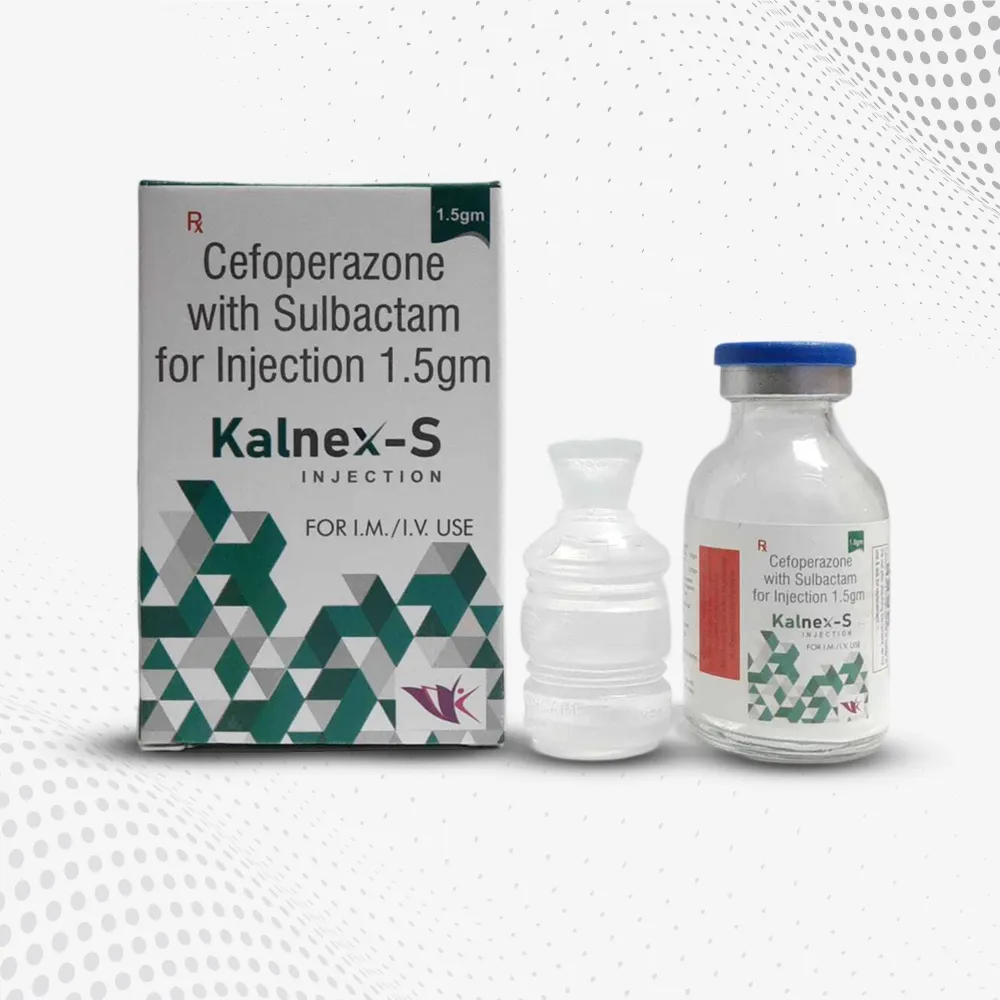
Cefoperazone 1 GM+ Sulbactam 0.5 GM
Urinary tract infections (complicated and uncomplicated). Peritonitis, cholecystitis, cholangitis.
Urinary tract infections (complicated and uncomplicated). Peritonitis, cholecystitis, cholangitis. Soft tissue and skin infections. Blood infections (septicemia). Gyn infection (endometritis, pelvic inflammatory disease). Infection of bones and joints. Active against multi-resistant bacterial infections.
Certified Products
pAYMENTS
Customer Support
Certified Products
PAYMENTS
Customer Support
Urinary tract infections (complicated and uncomplicated). Peritonitis, cholecystitis, cholangitis. Soft tissue and skin infections. Blood infections (septicemia). Gyn infection (endometritis, pelvic inflammatory disease). Infection of bones and joints. Active against multi-resistant bacterial infections.
Urinary tract infections (complicated and uncomplicated). Peritonitis, cholecystitis, cholangitis. Soft tissue and skin infections. Blood infections (septicemia). Gyn infection (endometritis, pelvic inflammatory disease). Infection of bones and joints. Active against multi-resistant bacterial infections.
FAQ
Q1. What is the use of KALNEX-S 1.5 GM?
It is applied in the treatment of severe bacterial lung, urinary tract, abdominal, skin, blood, and bone infections.
Q2. What is the administration of this injection?
It is only given by a health practitioner intravenously (IV) or intramuscularly (IM).
Q3. Is this injection applicable in pregnancy?
It can be employed when it is evidently required and recommended by a physician. You should always consult your doctor.
Q4. Is it safe to kidney or liver patients?
In kidney or liver impairment, dose adjustment may be necessary. Supervision by doctors is compulsory.
Q5. Is it possible to take it with alcohol?
No. Cefoperazone may induce disulfiram-like reaction to alcohol (flushing, nausea, low BP). Do not take alcohol at all during treatment
FAQ
Q1. What is the use of KALNEX-S 1.5 GM?
It is applied in the treatment of severe bacterial lung, urinary tract, abdominal, skin, blood, and bone infections.
Q2. What is the administration of this injection?
It is only given by a health practitioner intravenously (IV) or intramuscularly (IM).
Q3. Is this injection applicable in pregnancy?
It can be employed when it is evidently required and recommended by a physician. You should always consult your doctor.
Q4. Is it safe to kidney or liver patients?
In kidney or liver impairment, dose adjustment may be necessary. Supervision by doctors is compulsory.
Q5. Is it possible to take it with alcohol?
No. Cefoperazone may induce disulfiram-like reaction to alcohol (flushing, nausea, low BP). Do not take alcohol at all during treatment